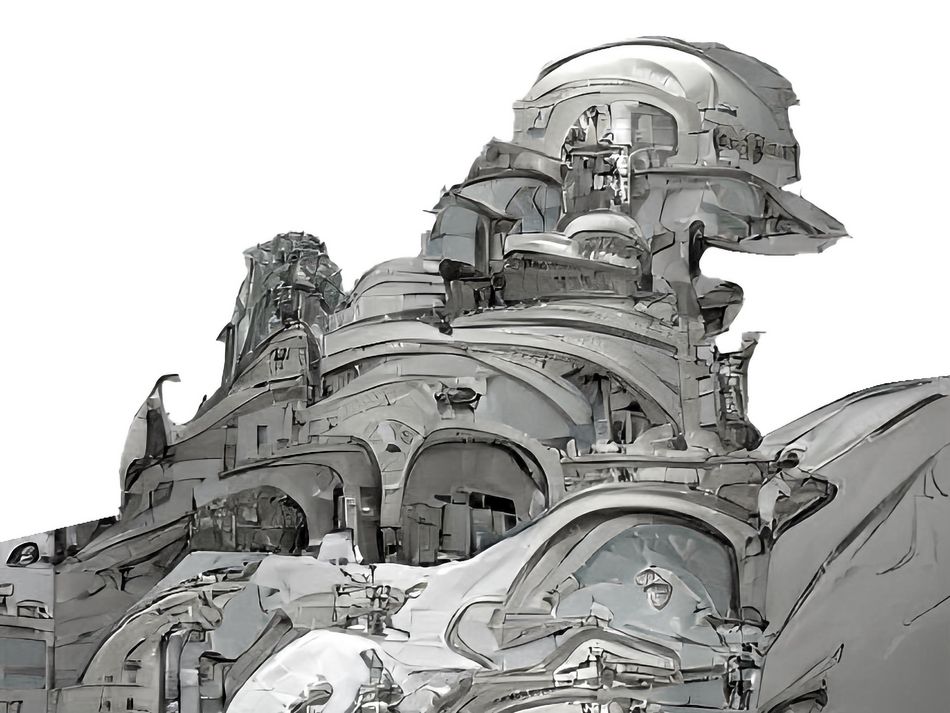
A promising start to the new year 2022 for the Design Campus: The joint project "Making Artificial Intelligence tangible and comprehensible: Connecting technology and society through design" (KITeGG) with the Mainz University of Applied Sciences, the Offenbach University of Applied Sciences, the Schwäbisch Gmünd University of Applied Sciences and the Cologne University of Applied Sciences aims to sustainably anchor the teaching of artificial intelligence topics and methods in the field of design. To this end, a professorship for artificial intelligence (AI), a research assistant position for AI laboratory management and an AI laboratory are being financed at the Design Campus; a dedicated AI server is also part of the funding. The subject of artificial intelligence is intended to enrich the degree programmes at the Design Campus - architecture, communication design, intermedia design, interior design, fashion design as well as gemstone and jewellery - with valuable, forward-looking impulses. The joint project is supported and financed by the Federal Ministry of Education and Research with a total of around 5 million euros over a period of four years.
Project management in Trier is the responsibility of university professors Prof. Dr. Matthias Sieveke and Prof. Harald Steber. "It is unique in Germany and a challenging experiment to integrate artificial intelligence into design courses," says Prof. Dr. Sieveke, architect and Dean of the Design Campus.
"I am very pleased that we are now part of such a strong creative university network and that we are dedicating ourselves together to the topic of artificial intelligence in design, especially with regard to sustainability," adds Harald Steber, professor in the field of communication design and sustainability officer at the Campus Gestaltung.
Prof. Dr. Dorit Schumann, President of Trier University of Applied Sciences, signed the cooperation agreement last week. "As Trier University of Applied Sciences, we stand for quality in teaching, interdisciplinarity and application orientation to a high degree. I am very pleased that we are successful in this highly competitive programme to dovetail approaches from design and artificial intelligence. The students and also the teachers will be thrilled," says Schumann.
Sustainability and innovation in the context of artificial intelligence
Digitisation and thus also artificial intelligence open up new possibilities and are the perfect complement to traditional education. The funding of an overarching professorship on artificial intelligence for all six disciplines offers new perspectives in applied research. Students are brought up to date with the latest technology and learn an interdisciplinary, holistic approach to design methodology. Thus they are optimally trained for the job market of the future. Through the use of artificial intelligence, the topic of material efficiency, for example, can be worked on in depth as a sustainable aspect for avoiding overproduction. The students learn to apply the information supported by artificial intelligence as a basis for ethically and ecologically responsible decisions in design.
Establishment of an AI lab for sustainable materials research
In addition, the laboratory for sustainability and materials research supports the theoretical AI lessons and leads to practical implementations in design. Here, for example, innovative material developments or the optimisation of existing production methods are conceivable; at the same time, questions of sustainability must be answered anew and the change in consumer needs must be taken into account. This calls for a rethink, the use of innovative materials or even the rediscovery of old techniques - here, AI can serve as a creative tool for finding ideas and inspiration or also for allowing various complex contexts to flow into the design process.
What can AI do in design?
Artificial intelligence is one of the big topics of the future. The research project "KITeGG" aims to enable students to understand and use artificial intelligence as another tool for design. By building up a strong network of design universities, the project aims to consolidate AI topics and methods across the entire breadth of the field of design. The joint project aims to integrate artificial intelligence into education so that students are able to use these methods in design in a reflective manner.
The aim of the network is also the long-term development of a cloud-based infrastructure for teaching and learning in the field of AI, which will continue to exist between the design universities after the end of the project period. During the project period, the results will be presented annually in the form of workshops and symposia in order to contribute within and outside the network to the overarching question of how design education perspectives should be expanded with a view to AI topics in order to face future challenges.
About the funding initiative:
With the funding initiative "Artificial Intelligence in Higher Education" of the Federal Ministry of Education and Research, the Federal Government and the Länder are striving to effectively develop the key technology of artificial intelligence across the breadth of the higher education system. The projects of the selected higher education institutions are to promote the competences of students in the field of artificial intelligence through appropriate offers and to integrate the subject area more strongly in the respective studies. The selection of the applications was made within the framework of a science-led, competitive procedure.
You are leaving the official website of Trier University of Applied Sciences